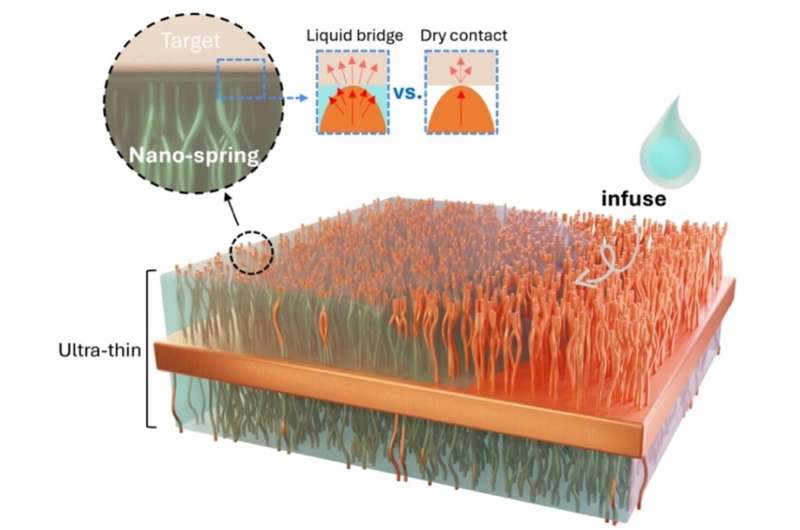Thermal interface material slashes AI data center cooling cost and GPU/CPU power use
The AI revolution has ushered in an era of exponential power and energy consumption. According to the US Department of Energy, energy consumed by AI data centers could triple by 2028. Today, up to 40% of data center power use comes from cooling high-power chips—an astounding amount equivalent to the state of California’s entire electricity consumption.
To combat this, Sheng Shen, professor of Mechanical Engineering at Carnegie Mellon University has developed an innovative thermal interface material (TIM) that outperforms existing state-of-the-art solutions. His design, now published in Nature Communications, achieves ultra-low thermal resistance while increasing cooling efficiency via improved heat dissipation. It also proves to be highly reliable.
“The material is like a bridge between the nano- and macroscopic worlds,” explained Zexiao Wang, Ph.D. candidate in Shen’s lab. “Because the nanoscale material can be created using macroscale approaches, we can see with our own eyes the impact of the material on the world.”
Not only is Shen’s thermal interface material the best-performing on the market, it is also highly reliable. The team tested the material at extreme temperature ranges from -55 to 125 degrees Celsius for over one thousand cycles and the material showed no performance degradation.
“This material solves a lot of existing challenges and is ready to be used today,” said Shen. “While an immediate need is focused on cooling data centers, the application for this innovation is extensive. It can break through in industries that have been stuck using outdated thermal interface materials. It can be used for pre-packaging, reworked when using non-adhesives, and enables thermal bonding of two substrates at room temperature.”
“Oftentimes work at the nanoscale is foundational for a device that we might not see for decades,” said Qixian Wang, Ph.D. candidate. “It’s been exciting to see the real world impact our material can have today because it is so easy to use.”
“Our material will have great benefits to the field of AI computing,” said Dr. Rui Cheng, postdoc and innovation commercialization fellow of CMU and the lead author of the paper. “Beyond reducing energy consumption, we can make AI development more affordable, more renewable, and more reliable.”
More information:
Rui Cheng et al, Liquid-infused nanostructured composite as a high-performance thermal interface material for effective cooling, Nature Communications (2025). DOI: 10.1038/s41467-025-56163-8
Carnegie Mellon University Mechanical Engineering
Citation:
Thermal interface material slashes AI data center cooling cost and GPU/CPU power use (2025, February 4)
retrieved 5 February 2025
from https://techxplore.com/news/2025-02-thermal-interface-material-slashes-ai.html
This document is subject to copyright. Apart from any fair dealing for the purpose of private study or research, no
part may be reproduced without the written permission. The content is provided for information purposes only.

Comments are closed